




Introduction to Urinary System
Have you ever thought about how waste products are removed from our bodies? How so naturally and smoothly the entire various processes happen in our body is just so magical. We drink about 3-4 litres of water in a day and also we eat different meals. There is also some undigested food so how do that undigested food and other waste is thrown out from our bodies? After drinking a lot of water we rushed toward the restroom. Why so? The answer to all such questions is provided by the detailed study of the Urinary System which is quite useful to perform the process of excretion and it looks like so as shown in the next topic explained below.
Diagram of Kidneys and Bladder
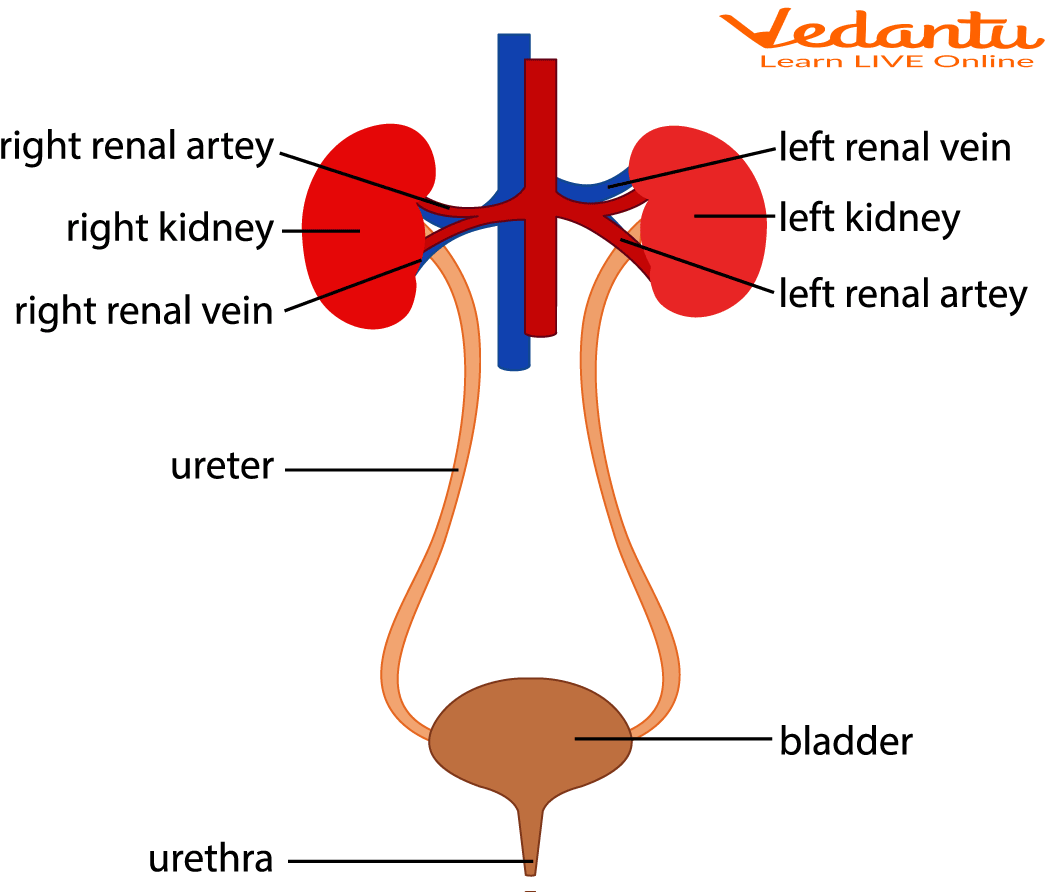
Urinary System in Humans
The organs that make urine and remove urine and other fluid waste from the body are known as the Urinary System. It is also known as the urinary tract or renal system. This system filters the blood, removing waste and excess water. This waste becomes urine.
The urinary system works as a filter, it uses a series of tubes and ducts to pass out waste. This system helps the rest of the body to work properly. This system filters the blood to get rid of what our body doesn't need. It eliminates extra water and salt, toxins, and other waste products. The elimination of urine is essential to remove the waste and thus regulate the balance of the body and it also maintains blood pressure.
Adults eliminate about 27 to 68 fluid ounces per day based on a daily fluid intake of 68 ounces. This triangle-shaped, hollow organ is located in the lower belly. It is held in place by ligaments that are attached to other organs and pelvic bones.
Different Parts of the Urinary System
Different parts of the urinary system perform different roles and thus work as a system. Let’s study its parts:
Kidneys
The kidneys are a pair of bean-shaped organs that filter the blood and make urine, a human body has two kidneys, one on either side of the back of the abdomen, just below the rib cage. Each kidney is as big as a human fist. Each kidney is 3 centimetres thick, 6 cm wide, and 12 cm long. The main role of the kidney is to maintain homeostasis. They manage fluid levels and electrolyte balance.
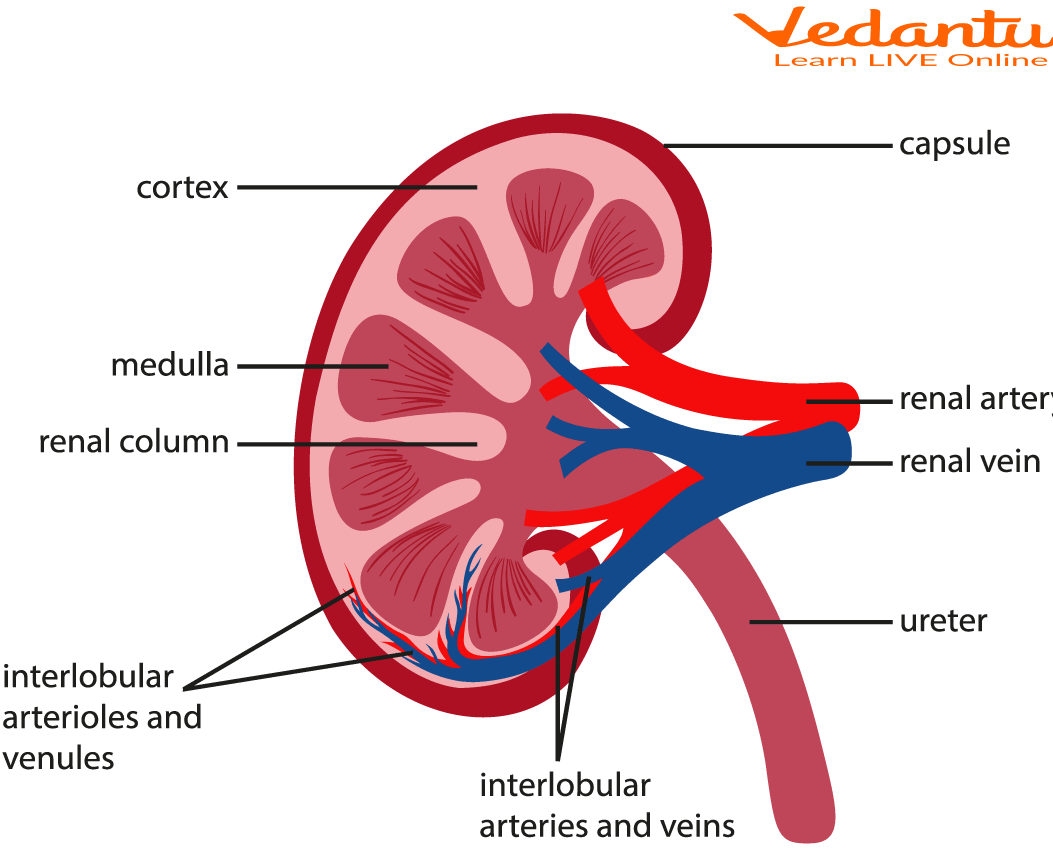
Structure of Kidney
Ureters
These are two thin tubes inside the pelvis which carry urine from the kidneys to the bladder. Each ureter is a small tube about 25 cm long. Muscles in the ureter walls tighten and relax to force urine down and away from the kidneys. The ureters work constantly emptying urine into the bladder about every 10 to 15 seconds. The ureter begins at the ureteropelvic junction of kidneys which lie posteriorly to the renal vein and artery.
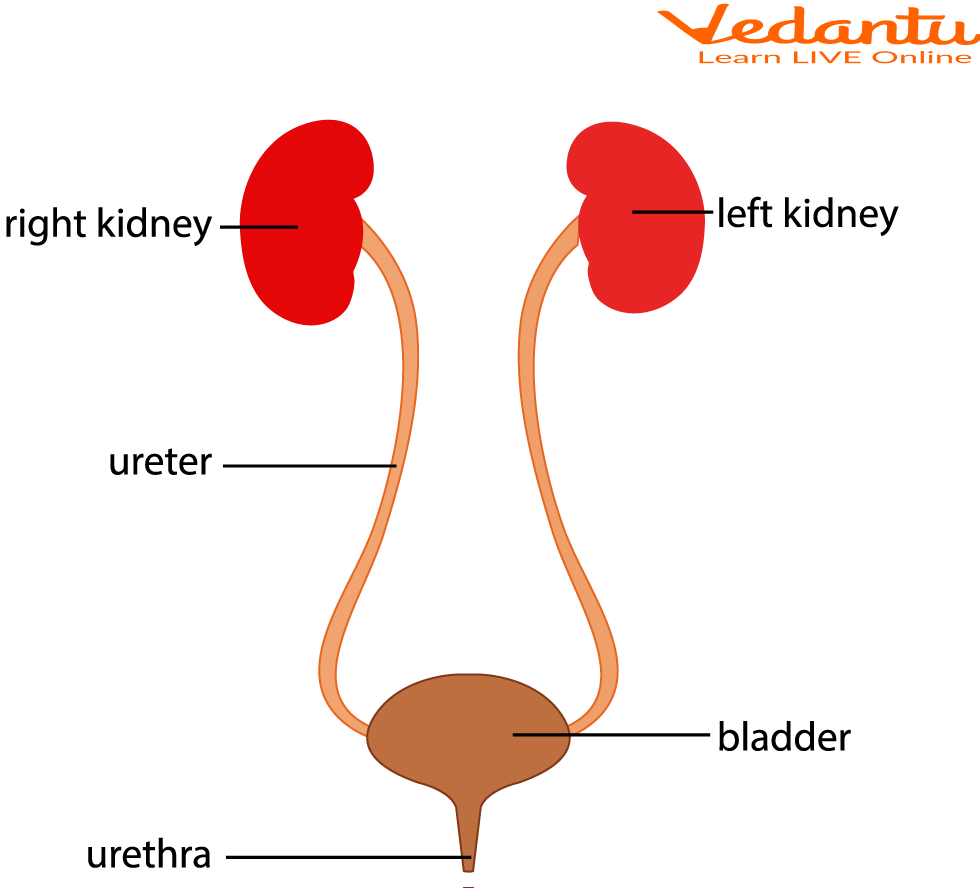
Position of the Ureter in the Urinary System
Bladder
The bladder holds urine until it's ready to empty. It’s hollow, made of muscle, and shaped like a balloon. Mostly it can hold up to 2 cups of urine. Urine enters the bladder via the ureters and exits via the urethra.
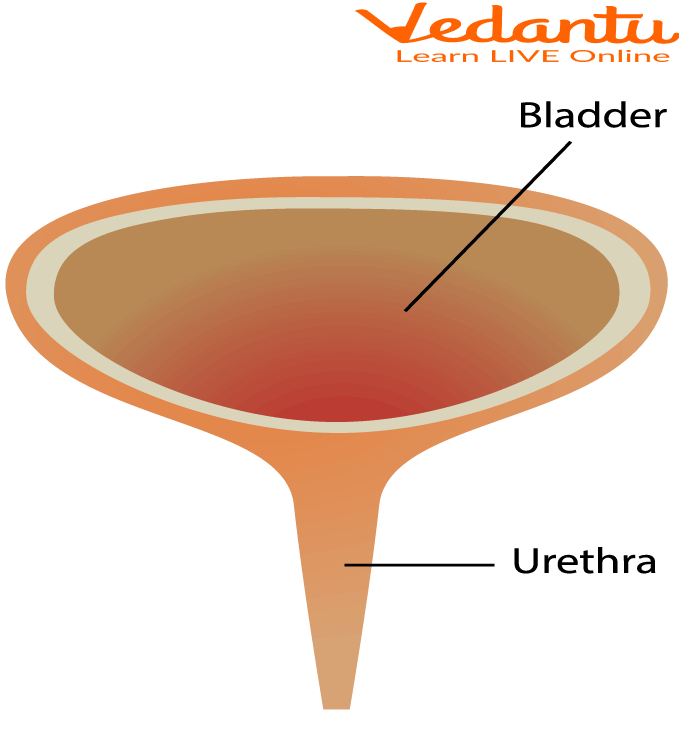
Structure of Bladder
Urethra
This tube carries urine from the bladder out of the body. It ends in an opening to the outside of the body in men through the penis and in females through the vagina. It is thin and fibromuscular in nature.
Function of Urinary System
The functions of the Urinary System are as follows:
Kidney: Regulates blood volume and composition, regulates pH, produces 2 hormones and excretes waste.
Ureters: transfer the kidney's urine to the bladder.
Urinary bladder: Keep pee and release it through the urethra.
Urethra: discharge urine from the body.
Female Urinary System
Women's urethra and bladder are not related to the reproductive system. Females have a much shorter urethra, which is about 1.5 inches long. The urethra extends through the neck of the bladder, internal and external sphincters, and the urogenital diaphragm. Urine infections are common in women because of the opening of the ureter, and the small distance between the anus and the vagina. The sole function of the female urethra is to transport urine from the urinary bladder to the extracellular space.
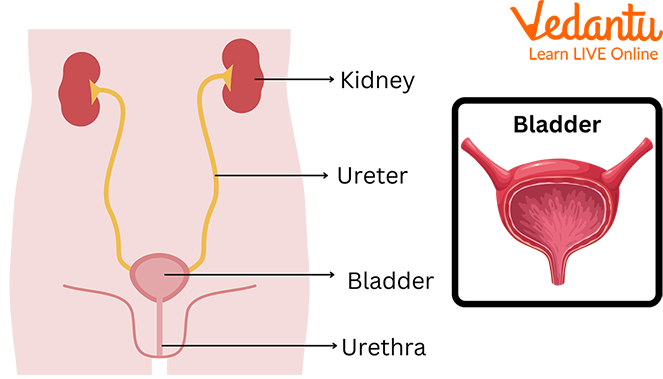
Female Urinary System
How Does the Urinary System Work?
The Urea is carried in the bloodstream to the kidney, which removes urea from the blood through tiny filtering units called nephrons. Each Nephron consists of a ball formed of small blood capillaries called the Glomerulus and renal tubule. From the kidneys, urine travels down to the ureters to the bladder from where the urine is ready to go out of the body.
Some Interesting Facts about the Urinary System
The colour of pee is due to a pigment called urochrome.
The human bladder can stretch to hold about 400ml of urine.
Nerves send signals to the brain with this indication we feel the urge to empty the bladder.
If one kidney fails to function and can be removed survival is possible even with one kidney which increases in size by 50%.
Urine is diluted and if added to potted plants in the garden acts as a source of nitrogen to plants.
Summary
We can conclude that urine is stored in the Bladder. Normal healthy urine is a pale straw or transparent yellow. The darker yellow colour indicates that we should drink more water. The brownish colour may indicate a liver problem. Urinary system stores and secretes out the urine as a waste product. We should maintain hygiene so as to maintain the proper functioning of the urinary system. The urinary bladder is made of several distinct tissue layers.
FAQs on Urinary System
1. Why is urine yellow?
Urine is a mix of water, and waste that the kidney filters out. The kidney breaks down old haemoglobin which is a portion of red blood cells that releases the waste via urine. One of the wastes is Urochrome which gives colour to the urine. Apart from this yellow colour indicates that a person is healthy and is not prone to any kind of urinary infection. Urochrome is a colored pigment that is responsible for the yellow colour of urine. Urochrome is known as urobilin. If Urochrome is present in large amounts, then the urine will be darker in colour.
2. In which part of the urinary system is urine stored?
Urine is stored in the Bladder. Urine flows from the kidneys through the ureters to the bladder until it leaves the body from the urethra, the bladder is pyramid-shaped in nature but as urine fills into it, it becomes more oval and thus expands a lot. The walls of the bladder expand and relax to store urine and it contracts and flattens to empty urine and is triangled shaped. The bladder can accommodate 600 to 800 ml of urine and is elastic in nature.
3. What gives urine its smell?
When urine is highly concentrated, it contains more ammonia and less water. This can cause it to have a strong smell. Urine tends to be more concentrated when a person is dehydrated.









